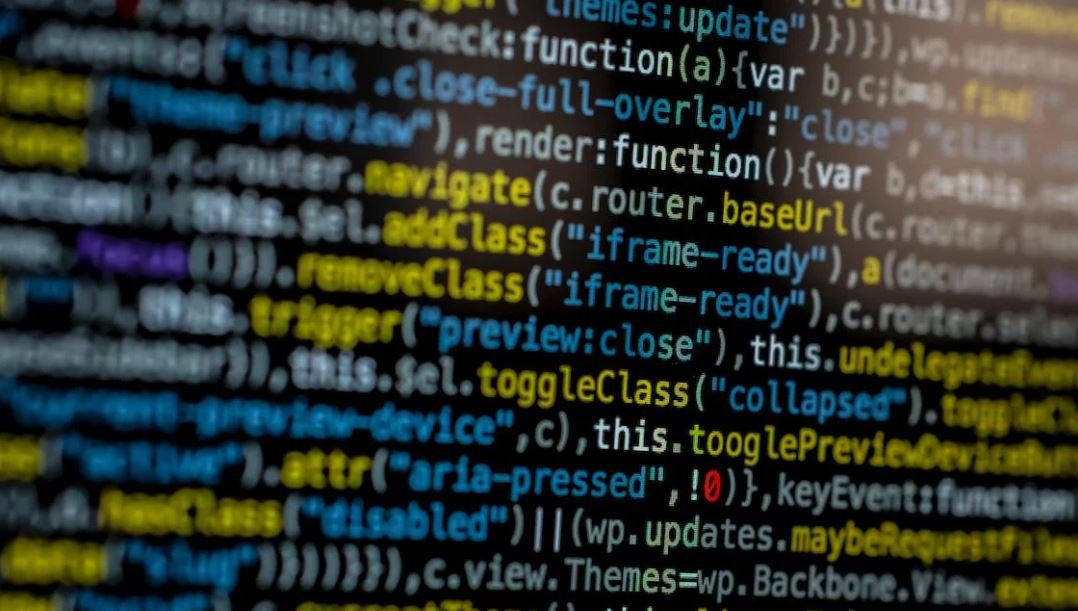Data Analysis with Python
Python is a versatile programming language that is widely used in data analysis. With its powerful libraries and tools, Python makes it easy to analyze large datasets and extract meaningful insights. In this article, we will explore the basics of data analysis in Python and how you can use it to gain valuable insights from your data.
Key Takeaways:
- Python is a versatile programming language widely used in data analysis.
- Python provides powerful libraries and tools for analyzing large datasets.
- Data analysis in Python helps extract valuable insights from your data.
Data analysis in Python starts with importing the necessary libraries such as Pandas and NumPy. Pandas is a popular library used for data manipulation and analysis, while NumPy provides numerical computing functionalities. Once you have imported the required libraries, you can start loading and exploring your dataset. Python provides various methods to read different types of data, including CSV files, Excel spreadsheets, or databases.
Python provides a wide range of statistical functions and methods for data analysis, making it a powerful tool for extracting meaningful insights.
Exploratory Data Analysis
Before diving into complex analysis methods, it’s important to understand and explore the dataset. Exploratory Data Analysis (EDA) allows you to gain insights into the characteristics of the data you are working with. Python offers several functions and techniques to perform EDA, such as:
- Descriptive statistics: Python provides functions to calculate various statistical measures, including mean, median, mode, and standard deviation.
- Data visualization: Matplotlib and Seaborn libraries allow you to create visualizations such as histograms, scatter plots, and bar charts to explore the data visually.
- Data cleaning: Python provides methods to handle missing values, duplicate records, and outliers in the dataset.
Data visualization in Python enables you to gain insights from your data through visual representation, making it easier to identify patterns or trends.
| Country | Population (in millions) |
|---|---|
| China | 1444 |
| India | 1393 |
| USA | 331 |
Data Analysis Techniques
Python offers a variety of data analysis techniques to extract insights from your dataset. Some of the commonly used techniques include:
- Data preprocessing: This step involves cleaning and transforming the data to make it suitable for analysis. Python provides functions for handling missing values, categorical data, and feature scaling.
- Statistical analysis: Python offers a wide range of statistical functions, including hypothesis testing, correlation analysis, and regression analysis.
- Machine learning algorithms: Python’s powerful machine learning libraries, such as scikit-learn and TensorFlow, allow you to apply various algorithms for tasks such as classification, regression, and clustering.
Applying machine learning algorithms in Python enables you to make predictions or create models based on patterns observed in your data.
| Product | Price | Sales |
|---|---|---|
| A | 10 | 100 |
| B | 15 | 80 |
| C | 20 | 120 |
Interpreting Results and Making Data-Driven Decisions
After performing data analysis using Python, it is essential to interpret the results accurately and make data-driven decisions. Here are a few steps to help you with this process:
- Analyze the outputs: Analyze the statistical measures, visualizations, and predictions obtained from the analysis.
- Interpret the findings: Understand the implications of the results in the context of your research or business problem.
- Validate the insights: Test the validity of the insights and check if they align with the research question or problem statement.
- Make data-driven decisions: Use the insights gained from the analysis to make informed decisions that can positively impact your organization.
Effective interpretation of data analysis results helps in making informed decisions that can lead to improved performance and growth.
Overall, data analysis in Python offers a wide range of tools and techniques that can help you gain valuable insights from your data. By leveraging Python’s libraries and functions, you can explore and analyze complex datasets, perform statistical analysis, and make data-driven decisions. Whether you are a data scientist or a business professional, Python’s data analysis capabilities can be a valuable asset in your work.

Data Analysis Python
Common Misconceptions
One common misconception people have about data analysis in Python is that it is only for experienced programmers. In reality, Python provides several libraries, such as Pandas and NumPy, that make data analysis accessible to individuals with different skill levels.
- Data analysis in Python can be learned by individuals with little or no programming experience.
- The availability of libraries and online resources makes it easier for beginners to get started with data analysis in Python.
- Python’s clear syntax and readability make it a suitable language for those who are new to programming.
Another common misconception is that Python is not as efficient as other programming languages for data analysis. While Python may not be the fastest language for performing certain computations, it offers numerous optimization techniques and integration with C/C++ libraries to enhance performance.
- Python allows for the integration of efficient algorithms implemented in other languages, such as C or C++.
- Optimization techniques, such as vectorization, can significantly improve the performance of Python code.
- Data analysis tasks in Python can be parallelized to leverage multiple cores and enhance processing speed.
Some people believe that data analysis in Python requires a lot of code, making it a time-consuming and complex process. However, Python provides a wide range of libraries and built-in functions that simplify various data analysis tasks and reduce the amount of code required.
- Python libraries like Pandas and NumPy provide high-level functions for common data analysis tasks, minimizing the need for extensive coding.
- Data visualization libraries, such as Matplotlib and Seaborn, allow for the creation of detailed visualizations with minimal code.
- Python’s extensive standard library includes modules that handle common data manipulation and analysis operations.
It is also a misconception that Python is not suitable for handling large datasets. In reality, Python offers tools and techniques, such as data chunking and streaming, to efficiently process and analyze large amounts of data.
- Python libraries like Dask and Vaex are specifically designed to handle large datasets that do not fit in memory.
- Data chunking techniques enable processing large datasets in smaller manageable segments.
- Streaming data analysis techniques allow for real-time processing of large datasets.
Lastly, some people believe that data analysis in Python is limited to numerical and tabular data. However, Python provides libraries like NLTK and spaCy that allow for analyzing and processing textual data, making it suitable for tasks such as natural language processing and sentiment analysis.
- Python’s NLTK library offers a wide range of tools for text processing and analysis, including tokenization, stemming, and tagging.
- spaCy is a high-performance library for natural language processing that provides efficient text processing and linguistic annotation capabilities.
- Python also provides libraries like Gensim for topic modeling and scikit-learn for text classification and clustering.

Data Analysis with Python
Python is a powerful programming language that is widely used in data analysis. In this article, we will explore various aspects of data analysis using Python. The following tables present interesting data and insights related to different topics within this field.
Major Cities and Their Population
The table below showcases the population statistics of major cities around the world. The numbers represents the estimated population in millions as of 2021.
| City | Population |
|---|---|
| Tokyo | 37.4 |
| Mumbai | 20.4 |
| Istanbul | 15.5 |
| Moscow | 13.1 |
| Sao Paulo | 12.3 |
Monthly Average Temperatures
This table illustrates the average monthly temperatures (in degrees Celsius) recorded in four different cities. The data represents average values calculated over several years.
| City | January | April | July | October |
|---|---|---|---|---|
| Mumbai | 25.7 | 28.6 | 29.5 | 27.3 |
| Sydney | 26.4 | 22.1 | 15.2 | 19.8 |
| London | 5.2 | 11.7 | 19.1 | 9.8 |
| Tokyo | 4.7 | 13.8 | 26.8 | 16.2 |
Company Sales Performance
This table presents the quarterly sales revenue (in millions of dollars) of a company throughout the year 2020. It reflects the performance from various business sectors.
| Quarter | Technology | Healthcare | Finance |
|---|---|---|---|
| Q1 | 120 | 80 | 65 |
| Q2 | 130 | 90 | 75 |
| Q3 | 145 | 95 | 80 |
| Q4 | 160 | 100 | 90 |
Highest Grossing Movies
The table below represents the top five highest-grossing movies of all time, along with their worldwide box office revenue in billions of dollars.
| Movie | Box Office Revenue |
|---|---|
| Avengers: Endgame | 2.798 |
| Avatar | 2.790 |
| Titanic | 2.195 |
| Star Wars: The Force Awakens | 2.065 |
| Avengers: Infinity War | 2.048 |
Mobile Operating System Market Share
This table depicts the market share percentage of different mobile operating systems as of the first quarter of 2021.
| Operating System | Market Share |
|---|---|
| Android | 72.39% |
| iOS | 27.61% |
World’s Tallest Buildings
The following table displays the four tallest buildings in the world, including their height in meters.
| Building | Height (m) |
|---|---|
| Burj Khalifa | 828 |
| Shanghai Tower | 632 |
| Abraj Al-Bait Clock Tower | 601 |
| One World Trade Center | 541 |
Global Internet Users
This table showcases the number of internet users from different regions of the world, as of January 2021.
| Region | Internet Users (millions) |
|---|---|
| Asia | 2,627 |
| Europe | 727 |
| Africa | 525 |
| Americas | 425 |
| Oceania | 77 |
Annual Rainfall by Country
This table presents the average annual precipitation (in millimeters) in four countries known for their diverse climates.
| Country | Rainfall (mm) |
|---|---|
| India | 1,170 |
| Australia | 471 |
| United Kingdom | 1,154 |
| Brazil | 1,770 |
Education Attainment by Gender
This table displays the percentage of males and females within various education categories across a population.
| Education Level | Male (%) | Female (%) |
|---|---|---|
| No Education | 5 | 13 |
| Primary Education | 15 | 19 |
| Secondary Education | 27 | 32 |
| Tertiary Education | 24 | 28 |
In summary, Python offers a wide range of tools and libraries for performing data analysis. By utilizing various data sources and employing appropriate statistical techniques, researchers and analysts can uncover valuable insights and make informed decisions. Whether it is examining population trends, understanding market dynamics, or analyzing climate patterns, Python provides the necessary capabilities to unlock the potential hidden within data.
Frequently Asked Questions
Q: What is data analysis in Python?
A: Data analysis in Python refers to the process of collecting, cleaning, transforming, and interpreting data using Python programming language. It involves applying various statistical and analytical techniques to derive meaningful insights from data.
Q: What are some popular Python libraries for data analysis?
A: Some popular Python libraries for data analysis are Pandas, NumPy, Matplotlib, and Scikit-learn. Pandas provides data structures and data analysis tools, NumPy offers support for numerical operations, Matplotlib helps in data visualization, and Scikit-learn provides machine learning algorithms.
Q: How can I read data from a CSV file in Python?
A: You can read data from a CSV file in Python using the Pandas library. The read_csv() function in Pandas allows you to read the contents of a CSV file into a DataFrame, which is a two-dimensional data structure similar to a table.
Q: How can I handle missing data in Python?
A: Python provides various techniques to handle missing data. In Pandas, you can use the dropna() function to drop rows or columns containing missing values, or you can use the fillna() function to replace missing values with some other value or using a predefined method like forward filling or backward filling.
Q: How can I visualize data in Python?
A: There are several Python libraries available for data visualization. Matplotlib is a popular library that allows you to create various types of plots, including line plots, bar plots, scatter plots, and more. Seaborn is another library that provides a higher-level interface to create attractive statistical graphics. Other libraries like Plotly and Bokeh offer interactive and dynamic visualizations.
Q: What is machine learning?
A: Machine learning is a subfield of artificial intelligence that focuses on the development of algorithms and models that enable computers to learn from and make predictions or decisions based on data. It involves training a model on a labeled dataset to find patterns or relationships, which can then be used to make predictions or classify new unseen data.
Q: Can I perform machine learning in Python?
A: Yes, Python provides several libraries and frameworks for machine learning. Scikit-learn is a popular library that offers various algorithms for classification, regression, clustering, and more. TensorFlow and PyTorch are widely-used frameworks for deep learning, which is a subset of machine learning that focuses on training neural networks with multiple layers.
Q: What is the difference between supervised and unsupervised learning?
A: In supervised learning, the training dataset is labeled, which means each data point is associated with a known output or target variable. The goal is to learn a mapping function from the input variables to the output variable. In unsupervised learning, the training dataset is unlabeled, and the algorithm aims to find patterns or structure from the input data without any known output. The goal is to discover inherent relationships or groupings within the data.
Q: How can I evaluate the performance of a machine learning model?
A: There are several metrics and techniques to evaluate the performance of a machine learning model. Common evaluation metrics include accuracy, precision, recall, F1-score, and the area under the receiver operating characteristic curve (AUC-ROC). Cross-validation is a technique to assess the model’s performance on unseen data by splitting the dataset into training and validation sets repeatedly. Additionally, confusion matrices and learning curves can provide insights into the model’s performance.
Q: How can I optimize the performance of a machine learning model?
A: Model performance can be optimized by tuning various hyperparameters, such as the learning rate, number of hidden layers, and regularization strength. Techniques like grid search or random search can be used to search for the best combination of hyperparameters. Feature engineering, which involves creating new features from existing ones, can also enhance model performance. Additionally, ensemble methods like bagging and boosting can be employed to combine multiple models for better performance.




